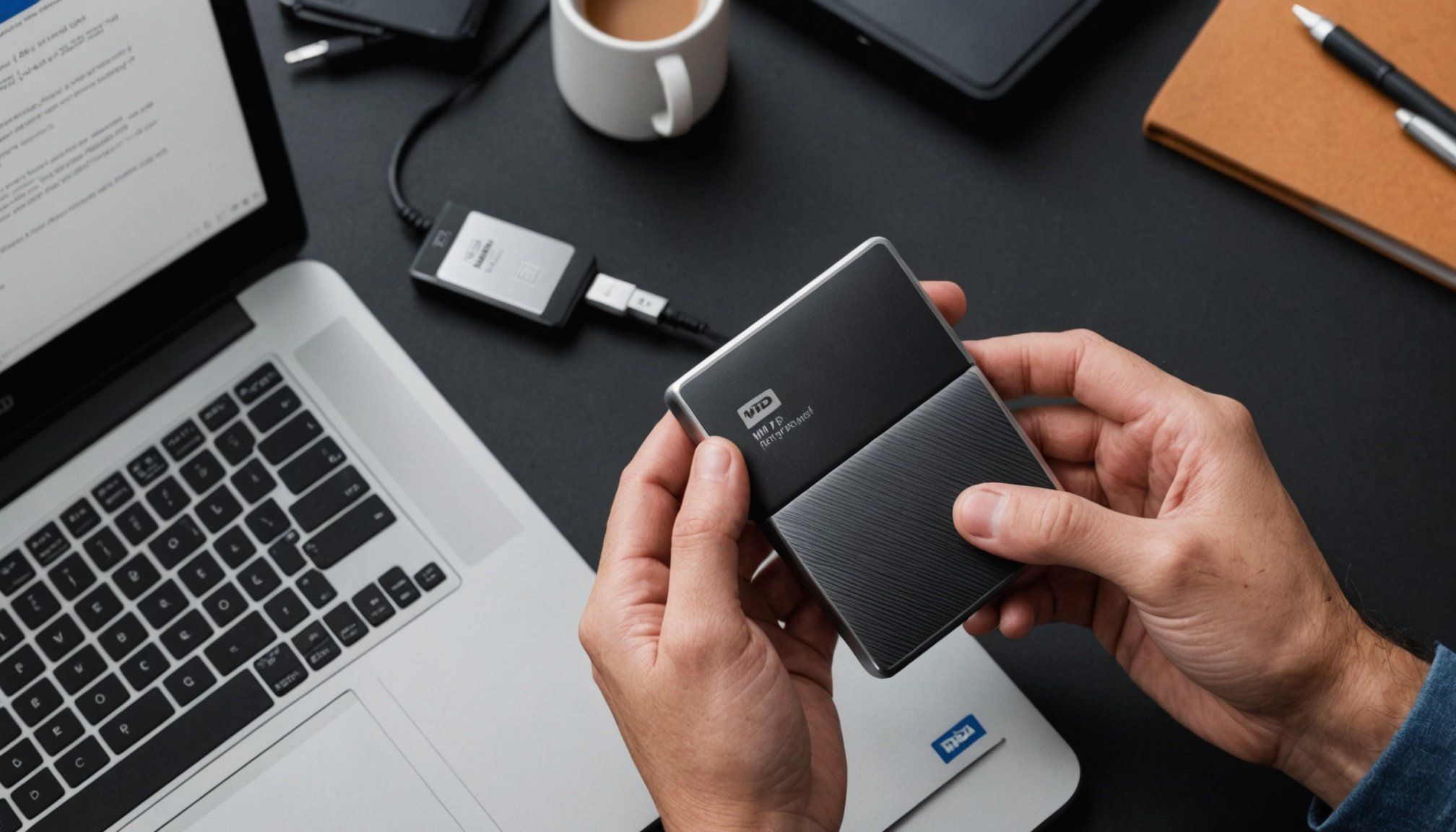Understanding the Importance of Data Protection
Though often overlooked, data protection is vital for maintaining data integrity and security during file transfers. In today’s digital age, where data breaches are increasingly common, understanding associated risks is essential.
Data transfers can expose sensitive information to cyber threats, leading to potential breaches if not protected adequately. This vulnerability arises from inadequate security measures, making files susceptible to interception by unauthorized individuals. The importance of security in these scenarios cannot be understated.
Also to read : Boost Your Dell Precision 5540: Essential Tips for Enhancing Blender 3D Rendering Performance
The consequences of data breaches are severe. Not only do they result in financial losses, but they also compromise personal and confidential information, damaging trust and reputations. Therefore, ensuring that data is protected from theft, alteration, or destruction during transfers is crucial.
Proactive measures play a significant role in preventing data loss. Implementing robust security protocols, such as encryption and secure transfer methods, is necessary to safeguard information. Organisations must also stay informed of evolving threats and continuously update their security frameworks.
Understanding these aspects not only helps mitigate risks but also stresses the need for persistent vigilance in protecting valuable data assets. By recognizing the gravity of data protection, individuals and businesses alike can make informed decisions to bolster their overall security posture.
Best Practices for Secure File Transfers
In the realm of data transfers, adhering to best practices is crucial for ensuring data safety. Implementing these strategies can significantly reduce vulnerabilities and enhance the security of your data.
Utilizing Encryption for Protection
Encryption acts as a powerful layer of security, transforming readable data into coded text. By making use of data encryption techniques, sensitive information becomes inaccessible to unauthorized entities. Choose encryption methods that offer robust protection to safeguard your data during transmission.
Choosing Secure Transfer Methods
Opt for secure transfer protocols, such as SFTP or HTTPS, that offer encrypted file transfer processes. These protocols ensure that data is transmitted safely over networks, minimizing the risk of interception by malicious actors.
Regular Software Updates and Patches
Maintaining updated security software is pivotal in mitigating vulnerabilities. Regular patches and updates fortify your software against emerging threats, ensuring that your data remains protected. Investing in security software that offers reliable updates can play an essential role in safeguarding data during transfers.
By employing these practices, organisations and individuals can fortify their data transfer processes and uphold data safety. Recognizing the importance of secure file transfers and implementing proactive measures can serve as a steadfast defense against contemporary cyber threats.
Recommended Tools and Software
To fortify your data’s safety, investing in robust data protection tools is essential. These tools provide multiple layers of security, addressing vulnerabilities and ensuring that your information remains confidential and intact during transfers.
Overview of Encryption Software Options
Encryption software serves as the first line of defence in protecting sensitive files. Options like BitLocker and VeraCrypt offer broad encryption capabilities, transforming data into an unreadable format accessible only with the correct decryption key. This feature is critical for maintaining data integrity and defending against unauthorised access.
Recommendations for File Transfer Applications with Built-in Security Features
File transfer applications that integrate security features are vital. Tools such as FileZilla Pro and WinSCP support encrypted transfers via protocols like SFTP and FTPS. These applications ensure the safe movement of files across networks, significantly reducing the risk of data breaches.
Importance of Using Reputable Brands for Data Protection
Reliability is key; hence, selecting tools and security software from reputable brands is crucial. Companies with proven track records offer robust support and frequent updates, crucial factors for continual data protection. Trusted brands like Norton and McAfee extend professional-grade solutions, offering reassurance that your data is shielded by cutting-edge security measures.
Handling Your Western Digital My Passport SSD Securely
When it comes to preserving the longevity and security of your Western Digital My Passport SSD, handling guidance is key. Safeguarding your data management process begins with understanding the nuances of SSD security.
Safe Physical Handling of SSDs
To ensure optimal protection, treat your SSD with care. Avoid exposing it to extreme temperatures or magnetic fields, which could compromise the stored data. Consider using protective casings during transportation to prevent physical damage.
Proper Eject Procedures
Consistently adhere to proper eject procedures. Before unplugging your SSD, ensure that all transfers are complete. This helps in preventing data corruption. Use your computer’s “safely remove hardware” option to disconnect the SSD.
Storage and Environment Considerations
Maintaining a controlled environment plays a crucial role in device integrity. Store your SSD in a dry location, avoiding humidity which could affect its performance. Additionally, opt for a stable surface to reduce physical impact risks.
By following these guidelines, you can enhance the security of your Western Digital My Passport SSD, ensuring your data remains protected and maintaining device longevity. Adapt these strategies to foster effective data management and reduce the risk of unexpected data loss.
Common Risks and Troubleshooting Tips
In the context of data security risks, understanding potential dangers and knowing how to counteract them is essential. One significant risk during file transfers is interception by unauthorised parties, which can lead to data breaches. To mitigate this, always employ secure transfer protocols and robust encryption techniques.
Should data loss occur, acknowledging the problem quickly is crucial. Begin with a thorough troubleshooting data loss assessment by evaluating the immediacy and scale of the loss. Next, utilise your data backup solutions—if available—to restore the most recent versions of lost files.
When it comes to recovery tips, it’s wise to have reliable recovery software on hand. These tools can retrieve deleted or corrupted files, thus minimising the impact of loss.
To securely recover lost data, first ensure that no further data overwriting takes place. This involves avoiding new write operations on the affected storage device. Recovery software should be run on a separate machine, where possible, to prevent additional corruption.
Secure Recovery Approach
- Backup Usage: Always keep updated backups to streamline recovery.
- Software Choice: Opt for reputed data recovery tools.
- Non-intrusive Recovery: Avoid overwriting to protect data integrity.
Continuous Monitoring and Improvement
Consistent data monitoring and ongoing protection are essential for safeguarding sensitive information and maintaining a robust security posture. Implementing comprehensive strategies allows organisations to detect anomalies early and respond effectively.
Regular Security Audits
Conducting regular security audits is crucial. These audits help in identifying vulnerabilities within the existing system that could potentially be exploited by cyber threats. By thoroughly reviewing security measures, organisations can pinpoint weaknesses and deploy solutions to strengthen these areas. Audits also validate the effectiveness of current protocols, ensuring they align with industry standards.
Monitoring Data Access and Transfers
Tracking data access logs plays a key role in detecting unauthorised attempts. By analysing these logs, organisations can identify unusual patterns that might indicate security breaches. Monitoring data transfers diligently ensures that any irregularities are quickly flagged, allowing timely interventions to minimise risk.
Keeping Up with Best Practices
Stay updated on best practices to enhance data security continuously. This involves adapting to the evolving threat landscape and integrating advanced techniques into your security protocols. Familiarising yourself with emerging technologies and strategies not only fortifies your data defences but also ensures compliance with regulatory requirements. Regular training and updates keep your team informed and proactive.











